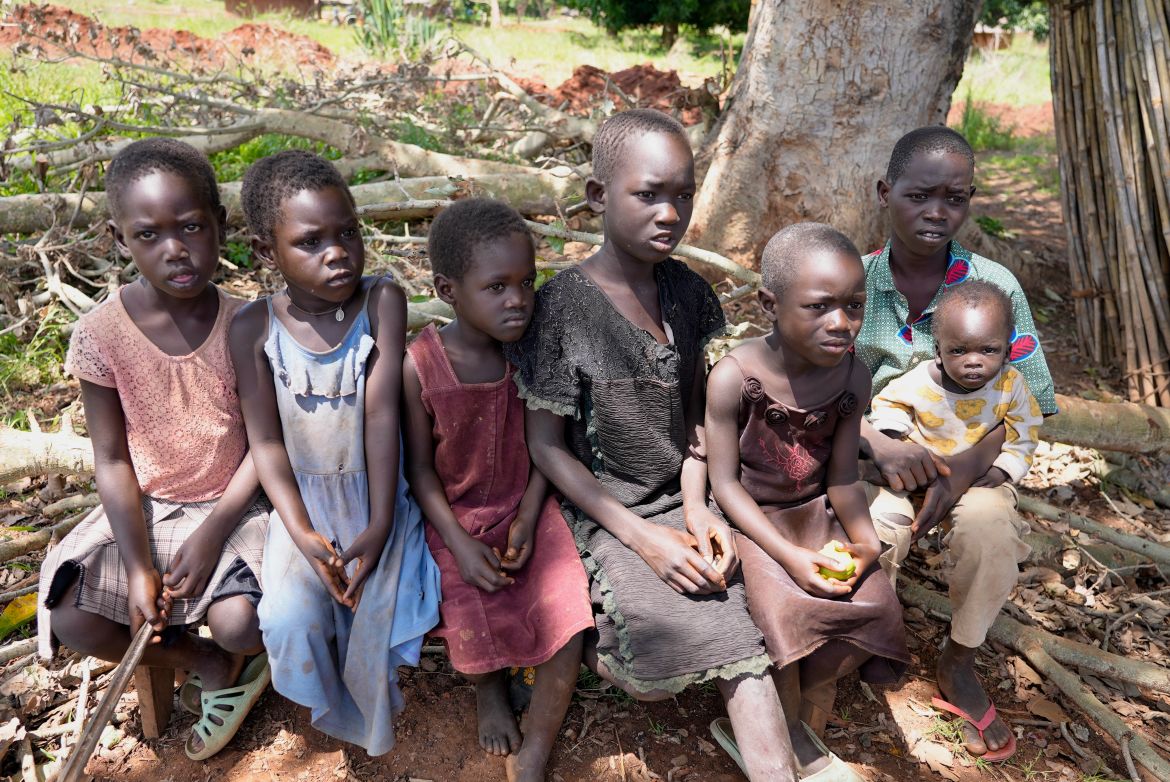In Pictures
South Sudan struggles to clear landmines after decades of war
More than 5,000 South Sudanese have been killed or injured by land mines and unexploded ordnance since 2004.

For the first time since fleeing South Sudan’s civil war eight years ago, Jacob Wani returned home, excited to rebuild his life.
But when the 45-year-old farmer tried to access his land in Eastern Equatoria state’s Magwi County, he was banned and told that it had been labelled hazardous as it was full of landmines.
“My area is dangerous,” Wani said, standing in his shop in Moli village where he now lives, a few miles from the farm. “I do not have the capacity to rebuild in this place and I am also afraid (of explosives). If I go, maybe something can hurt me.”
As South Sudanese trickle back into the country after a peace deal signed in 2018 to end a five-year civil war that killed nearly 400,000 people and displaced millions, many are returning to areas riddled with mines left from decades of conflict.
More than 5,000 South Sudanese have been killed or injured by land mines and unexploded ordnance since 2004, according to the United Nations Mine Action Service (UNMAS).
South Sudan is trying to clear all anti-personnel minefields and cluster munitions in the country by 2026.
While more than 84 million square metres of cluster munitions and mines have been cleared in nearly two decades, according to UNMAS — equivalent to approximately 15,000 American football fields — experts doubt that the deadline will be met as munitions are being found across the country daily.
Ten people were killed in March after mistakenly playing with a grenade in a remote village in Western Bahr el Ghazal state.
“The contamination is too huge,” said Jurkuch Barach Jurkuch, chairperson for South Sudan National Mine Action Authority. Efforts are also complicated by a lack of funding, continued insecurity and flooding during the rainy season, he said.
Eastern Equatoria state, along the border with Uganda, is South Sudan’s most heavily contaminated area, hit by wars with northern Sudan before gaining independence in 2011, fighting with the Lord’s Resistance Army led by Uganda’s notorious strongman Joseph Kony and South Sudan’s civil war.
By the end of 2021, the state had the most areas with cluster munitions in the country — 55 out of a total of 123 — according to Mine Action Review, which does global mine analysis. The state is also the second most returned to in the country since the peace agreement, with more than 115,000 people coming back, according to the UN.
Private contractors and aid groups are trying to clear the area from contamination, but say the task is enormous.
During clearance of a cluster munitions site in May by the aid group MAG, 16 unexploded munitions were found in less than a week of work. Residents are also finding devices a few miles from main roads.
MAG is working with communities to raise awareness about the danger of mines and other unexploded ordnance.
“Land mines don’t have an expiry date,” said Clara Hayat, a community outreach officer with MAG, during a talk to a group of children in a village where people recently returned from Uganda. “Don’t bring them home, because they can kill,” she said.








